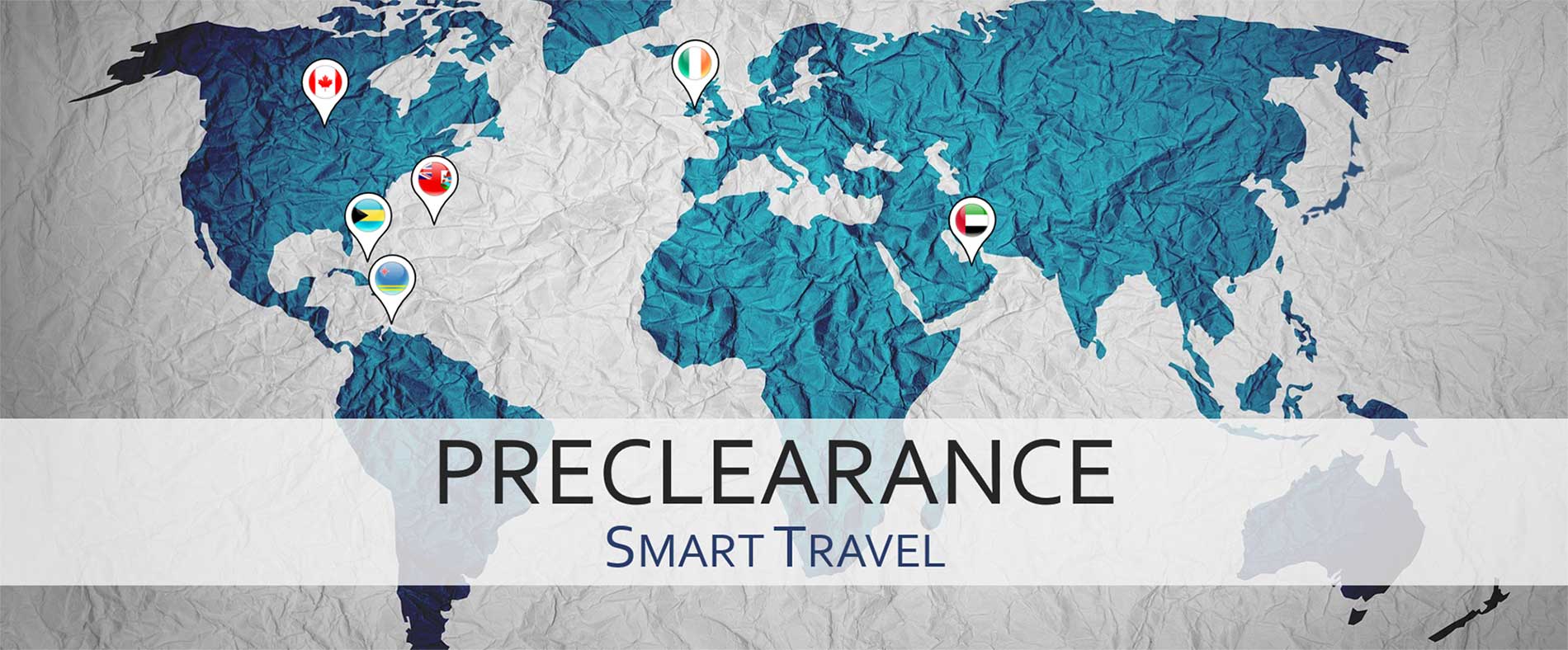Once travelers have completed a few international trips, you will likely come across something called Preclearance when returning to the United States. Some US border programs such as Global Entry and Mobile Passport Control expedite the customs process. However, these require additional setup in advance for anyone who wants to use them. US Preclearance is something that all travelers have to use if it is in place at your departure airport. Therefore, it is important to understand what it is and how that impacts your travel.
Post Contents
What are US Preclearance Facilities?
First, we should answer what US Preclearance Facilities are. These facilities perform the immigration and customs checks at a foreign airport prior to the plane departing to the US. United States Customs and Border Protection personnel staff Preclearance facilities. This means that aviation security is also provided by the Transportation Security Administration (TSA).
Preclearance facilities are present at 16 airports as of 2022. The exact locations organized by country are:
- Ireland – Dublin and Shannon
- Aruba – Oranjestad
- Bahamas – Freeport and Nassau
- Bermuda – Hamilton
- United Arab Emirates – Abu Dhabi
- Canada – Calgary, Toronto, Edmonton, Halifax, Montreal, Ottawa, Vanouver, Victoria, Winnipeg
How Do These Impact Travel?
Arrive to the Airport Earlier
While knowing what the Preclearance facilities are, it’s more important to understand how they affect travel. First, clearing customs and immigration takes time. Anyone who has gone through customs and immigration knows that the lines can be long. With Preclearance, this is done before boarding the departing flight. There will generally be a separate section of the airport setup just for US flights. The Preclearance Facility screens passengers before they arrive at this section of gates. Therefore, when transiting a Preclearance airport, enough time must be budgeted on the front end to avoid missing the flight. It is generally recommended to arrive three to four hours ahead of the flight departure time when going through Preclearance.
TSA Security
The security rules for boarding the flight will be TSA rules and not the rules of the country being departed. This can be good or bad. On the positive side, most travelers will be familiar with the TSA rules. These include the US rules on liquids, shoes, and electronics. Additionally, those with TSA Precheck will be able to use it at Preclearance facilities (assuming the line is open).
On the downside, the TSA tends to be more strict than other countries. Where the local country may have allowed a duty-free item purchased in the airport (or in another airport) to pass the security inspection, TSA will not allow this. This is most important for connecting flights with the layover at a Preclearance airport. I fell prey to this, and it cost me three bottles of South African wine.
Shorter Connection Time in the US

Because travelers have completed their customs and immigration checks at the Preclearance Facility, arriving planes land at domestic gates. This means that passengers are able to deplane the same as if you were traveling within the US. By not having to go through any arrival checks in the United States, connection times can be much shorter. There is no need to budget multiple hours upon arrival to clear customs. Also, if the first arrival airport in the United States is your final destination, travelers are able to get their bags and immediately leave.
Miniature Airport within an Airport

Once travelers have cleared Preclearance, they are considered to be back in the United States from an immigration and customs perspective. For this reason, the entry and exit of the Preclearance Facilities are closely controlled. As mentioned earlier, this means that the Preclearance area (and gates for US-bound flights) are segregated from the rest of the airport. This is important because the amenities of the rest of the airport aren’t available to passengers who have gone through Preclearance.
As an example, in the pre-departure area of Abu Dhabi, there is only an Etihad Airways Premium Lounge. This is a small lounge compared to others in Abu Dhabi. This lounge also doesn’t participate in any of the lounge programs like Priority Pass. In contrast, the other terminals of the airport have two larger lounges (Al Chabi and Diamond Lounge) that participate in Priority Pass. Therefore, if you are a Priority Pass holder and find yourself with time prior to departure, you will be out of luck after going through Preclearance.
Wrap-Up
All other things equal, I tend to dislike Preclearance Facilities for the reasons mentioned above. While it is nice to avoid the immigration and customs lines when arriving in the United States, as someone with Global Entry this has never been much of a problem. On the other hand, the TSA security rules (which have gotten me before on a connecting flight) and the inability to use all the amenities at the departing airport are two big downsides. Needing to arrive at the airport earlier means fewer hours at my travel destination which is also something I don’t really care for. However, all in all, it’s not really a big deal when you understand what it is and how it impacts travel. Prepare for Preclearance, and it won’t be more than a nuisance when departing.






Pingback: Circuit of Ireland Itinerary - Belfast in Two Days - The Vacation Wingman